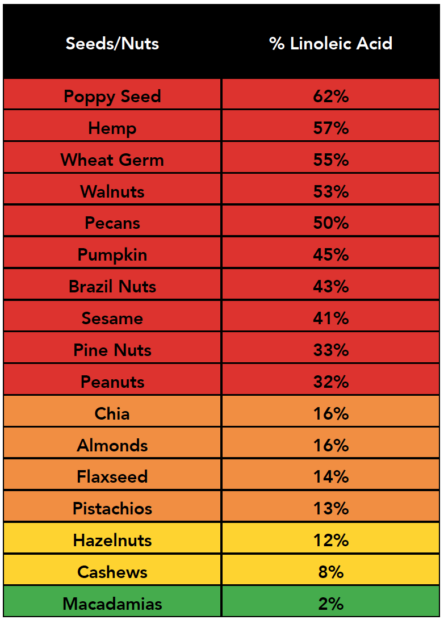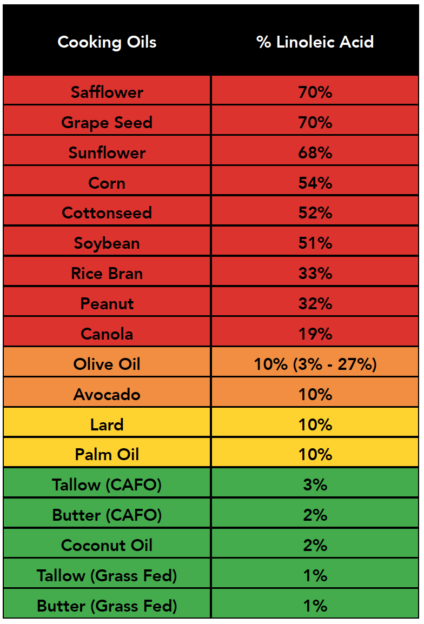Table of Contents
Interview by Well Being Journal Staff

As a board-certified family physician, Joseph Mercola, DO, treated more than twenty thousand patients before redirecting his focus to managing Mercola.com—the most visited natural health and longevity website for over twenty years. Mercola has authored over a dozen bestselling books, including The Truth About COVID-19, Fat for Fuel Ketogenic Cookbook, and Upgrade Your Immunity with Herbs. Learn more about Mercola through his social media @DrMercola and his podcast Take Control of Your Health.
Well Being Journal (WBJ): Thank you for taking the time to share your expertise with Well Being Journal readers. As the days grow longer and temperatures rise, what are some key reasons to go outside and enjoy the sunshine?
Joseph Mercola (JM): One of the main reasons is vitamin D. I have been studying and promoting vitamin D for nearly thirty years, and the last decade has brought an important awareness to the role of this nutrient in health and longevity. While I recommend getting vitamin D largely from sun exposure, most people optimize their levels by taking oral supplements. In that case, it’s best to take vitamin D together with vitamin K2. This will help balance out both vitamin D and magnesium, and help the body metabolize vitamin D to its active form.
As many know, vitamin D serves many important functions, including upregulating your ability to fight infections, reducing chronic inflammation, and producing over 200 antimicrobial peptides (AMPs), one of which is cathelicidin—a naturally occurring broad-spectrum antibiotic.1
To ward off infection and prevent chronic diseases, the level of vitamin D (25 hydroxy D) you’re aiming for is between 60 and 80 ng/mL (150 nmol/l to 200 nmol/l), with 40 ng/mL (100 nmol/l) being the low cutoff point for sufficiency to prevent a wide range of diseases, including cancer.
As I mentioned earlier, the key is to get your vitamin D from the sun. During the day, if you get proper sun exposure, near-infrared rays from the sun penetrate deep into your body and activate the enzyme cytochrome c oxidase, which in turn stimulates the production of melatonin—one of the most important antioxidant molecules in your body.
Sunlight May Affect Your Microbiome
To understand solar energy, it helps to be aware that thirty-nine percent of the solar spectrum is what we see as visible light. Most of the solar spectrum, 54.3 percent, is infrared, which is not visible but rather felt as heat. Ultraviolet (UV) light accounts for only 6.8 percent of the solar spectrum, and vitamin D is specifically produced in response to UVB radiation, which is only a small part of the ultraviolet spectrum.
It’s the exposure to this full spectrum light that yields the most benefits. Melatonin, for instance, is produced inside your mitochondria in response to near-infrared radiation, which is part of the infrared spectrum. Exposure to another type—narrow band ultraviolet B, or NB-UVB—leads to another little-known benefit—modulation of the human intestinal microbiome.2
The first study on how gut microbiota responds to UVB light was recently completed. Study participants were divided into groups who took vitamin D supplements during the winter prior to the study and those who did not. They were then exposed to NB-UVB three times during a one-week period.
Not only did vitamin D levels increase in both groups, but the light exposure significantly increased alpha and beta diversity in the group that didn’t take vitamin D, and the diversity of bacteria was enriched. The researchers proposed that a skin-gut axis may exist that affects the gut microbiome, and it appears to be mediated by sunlight.
Link Between Sun-Induced Skin Damage and Linoleic Acid
In a study published in Nutrition and Cancer, samples of fat tissue were taken from one hundred melanoma patients and 100 matched controls without melanoma and then analyzed for fatty acids. Researchers found that not only is there an increase in linoleic acid (LA) in the tissue of all the subjects, but the percentage of polyunsaturated fatty acids (PUFAs) is also significantly higher in the melanoma patients’ tissue. Accordingly, an increased consumption of dietary polyunsaturates may have a contributory effect in the etiology of melanoma.3
Linoleic acid is the primary fat found in omega-6 polyunsaturated fats, including vegetable/seed oils, and accounts for about eighty percent of the fat composition of vegetable oils. Omega-6 fats must be balanced with omega-3 fats in order to not be harmful.
The majority of the omega-6 on the market, including seed oils, has been damaged and oxidized through processing, such as heating. Once degraded, it generates oxidized linoleic acid metabolites, which are mutagenic, carcinogenic, cytotoxic, and atherogenic.
As pertaining to sun exposure, the LA embedded in your cell membranes gets activated by exposure to the sun, which contributes to skin damage. Once you drastically reduce LA consumption, your risk of sunburn will be dramatically reduced over time, as will your risk of skin cancer.
WBJ: As you mentioned earlier, sunshine is a vital source of vitamin D, but it also plays an important role in melatonin production. What is the link between adequate sunlight exposure and melatonin levels for optimal sleep?
JM: Melatonin is one of the most important antioxidant molecules and certainly the most ancient. It’s present in prokaryotes and even in plants. In the human body—aside from having direct antioxidant effects—it also stimulates the synthesis of glutathione and other important antioxidants, such as superoxide dismutase and catalase.4
Mitochondrial melatonin production is one of the reasons why regular sun exposure is so crucial. Most people understand that sun on bare skin generates vitamin D, courtesy of UVB (ultraviolet B radiation). Few, however, understand that the near-infrared spectrum, when hitting your skin, triggers the generation of melatonin in your mitochondria.
Notably, ninety-five percent of the melatonin in your body is concentrated within the mitochondria inside the cells and only five percent is produced by your pineal gland.
Any time your skin is exposed to natural sunlight, you can be sure you’re receiving the necessary wavelengths of near-infrared to generate melatonin in your mitochondria. Conversely, when indoors under artificial lighting, you’re not getting any. This is because most window glass is low-emittance and filters out a good portion of the near-infrared, so even sitting near a window is not going to provide you with this benefit.
It’s also useful to mention that there are two types of melatonin in your body: the melatonin produced in your pineal gland, which traverses into your blood, and the subcellular melatonin produced inside your mitochondria.
Importantly, the melatonin that your mitochondria produce does not escape your mitochondria. It doesn’t go into your blood. However, bright sun exposure around solar noon will help your pineal gland to produce melatonin during the night for sound sleep.
WBJ: Earlier you emphasized the importance of optimizing the ratio between omega 3 and 6 fatty acids—can you summarize the best sources of fat and how to effectively balance them?
JM: This is a critically important topic for supporting long-term health and longevity. Your question revolves around polyunsaturated fatty acid ratios. There is a very common misunderstanding concerning the fats needed to optimize health and longevity.
Many people have heard of the omega-3 to 6 ratio and believe if it is distorted the best solution is to consume more omega-3 fat. In fact, it is well-recognized that the best way to increase your body’s level of omega-3 fats is not by increasing its consumption, but by reducing the consumption of omega-6 fats.
While it is important to have a certain amount of omega-3s to maintain good health, adding excessive omega-3s is not recommended as it is also a PUFA and when consumed in high quantities will cause similar metabolic damage as LA, and result in increased free radical damage.
Seed Oil Consumption in the United States – How it affects Health and Longevity
Before 1866, the Western world for the most part only consumed animal fats, including tallow, suet, lard, and butter. Eastern societies used cold-pressed fats like coconut and palm oil. Vegetable oils as we know them today simply did not exist.
The single greatest change to the American diet was the introduction of industrially processed seed oils around 1866 after the US Civil War. Oleomargarine and deceptive adulteration of lard with cottonseed oil provided a major new market for what had formerly been considered “garbage.”
It wasn’t until 1911 that Procter & Gamble used a newly invented hydrogenation process to convert surplus unusable cotton seeds oil into a synthetically produced seed oil. This is where the first seed oil, Crisco, was born. Shortly afterward, margarine was made from seed oils, making margarine and Crisco the first seed oils to enter the market widely.
However, even with clever marketing, it took some time for this innovation to catch on. As recently as 1900, animals still provided ninety-nine percent of added fats in the human diet. However, by 2005, eighty-six percent of added fats came from seed oils.
Currently, the global consumption of seed oils is about 200 million tons per year, with a projected rate of 258.4 million tons by 2026. Today, almost every single processed food contains one of these low-quality seed oils—everything from potato chips and cookies to pastries and bread. Be sure to carefully examine the labels on the food in your pantry to avoid seed oils. Also, almost every single restaurant will likely use these oils to cook with.
Historically, the LA intake increased from approximately 2g/day in 1865, to 5 g/day in 1909, to 18 g/day in 1999, and more recently up to 29 g/day in 2008. If you were to research LA consumption as a percentage of the typical diet at that time, it accounted for approximately 1/100th of total calories in 1865 and increased to more than one-fourth of total calories by 2010. That is a 25-fold increase!
Aside from oxidation, inflammation, and mitochondrial dysfunction, processed seed oils can also:
- Damage the cells lining your blood vessels
- Cause memory impairment and increase your risk of Alzheimer’s disease. Particularly, canola oil has been linked to Alzheimer’s5
- Strip your liver of glutathione, thereby lowering your antioxidant defenses
- Inhibit delta-6 desaturase (delta-6)—an enzyme involved in the conversion of short-chained omega-3s to longer chained omega-3s in your liver
- Impair your immune function and increase mortality
- Make your fat cells more insulin sensitive, thereby contributing to insulin resistance
- Inhibit cardiolipin—an important fat in the inner membrane of your mitochondria


Seed Oils Remain in Your Tissues for YEARS
Another major reason why seed oils are exponentially more pernicious to your health and longevity is that they last much longer in your body. The half-life of LA is around 600 to 680 days, or approximately two years. Namely, it will take you about six years to replace ninety-five percent of the LA in your body with healthy fats. This is the primary reason why it is so important to keep your LA intake low.6
The sugar in processed foods is rarely present without seed oils. Your body can only store a limited amount of carbohydrates in the form of sugar (glycogen); they are primarily stored in your liver and muscle. If people stop eating sugar and carbohydrates, most will exhaust their glycogen stores in one to two days. So, if you go on an acute sugar binge, that sugar doesn’t stick around for years like the LA in seed oils.
Avoid Consuming Seed “Vegetable” Oils
The table above provides a comprehensive list of the most commonly consumed oils and their approximate LA content. In general, the lowest LA-containing fats would be the fats of choice. Instead of avoiding all oils, a healthier choice would be to use the cooking fats of our ancestors—butter and beef tallow.
These excellent animal-derived cooking fats are not only the lowest in LA, but will also provide the fat-soluble vitamins A, D, and K2. Most Americans simply fail to get enough vitamin A in their diet—a fact that can contribute to many chronic diseases, including poor vision. Coconut oil is also very low in LA, but it doesn’t have the important fat-soluble vitamins that both tallow and butter contain.
Nuts and Seeds Are Major Sources of LA
While nuts and seeds are often unprocessed and do not contain many advanced lipid oxidation end products (ALEs)—cytotoxic and genotoxic compounds—they will increase the LA content of your diet. Even though these are the best types of omega-6 fats to eat, once you consume over five grams of LA per day, their perishable double bonds will be oxidized and generate free radicals. Generally, nuts and seeds are not a problem if your total daily intake of LA is below two percent of your total daily intake.
WBJ: What about olive oil?
JM: When it comes to olive oil, tests reveal anywhere from sixty to ninety percent of the olive oils sold in American grocery stores and restaurants are adulterated with cheap, oxidized, omega-6 vegetable oils, such as sunflower oil or peanut oil, or non-human grade olive oils.
Even “extra virgin” olive oil is often diluted with other less expensive oils, including hazelnut, soybean, corn, sunflower, palm, sesame, grape seed, and/or walnut. These added oils will not be listed on the label, nor will most people be able to discern that their olive oil is not one hundred percent pure.
Like olive oil, many people who use avocado oil believe it is high quality, but oftentimes that is simply not the case. A 2020 study showed that eighty-two percent of avocado oil is adulterated, mislabeled, or of poor quality. The study demonstrated that there are serious problems in both quality and purity in the store-bought extra virgin and refined avocado oils.7
WBJ: That’s important to keep in mind, thank you! Now I’d like to briefly consider a topic you recently covered on Take Control of Your Health—the benefits of high-dose intravenous vitamin C. How does vitamin C IV compare to other forms, such as liposomal and whole food sources?
JM: I believe IV ascorbic acid is a powerful tool in treating sepsis and many infections. IV is likely the best route of administration but the expense can be radically lowered by using liposomal ascorbic acid. This works well for most infections but not for the high doses frequently required in treating cancer where doses may be as high as 300 grams a day and typically administered through a central line (as these doses would destroy most peripheral veins).
In simpler terms, ascorbic acid is a synthetic vitamin that is being used as a drug. Admittedly, a far safer drug but nevertheless still a drug. I do not recommend ascorbic acid as a daily supplement and caution against taking it daily for health maintenance.
Instead, I recommend getting whole food vitamin C from plant sources. One does not need to megadose, and 250-500 mg a few times a day is likely sufficient for most. I live in subtropical Florida and for most of the year can harvest acerola cherries from my plants. I typically restrict the amount to a pint per day, which provides me with about three grams. Other whole food vitamin C sources are amla (Indian gooseberry) and camu camu.
WBJ: Besides vitamin infusions, or nutritional supplements in general, what are your go-to preventive care strategies to ensure lasting health?
JM: Great question and really gets to the core of what I teach. Let’s start with the most important and least expensive strategy to implement—sunlight.
At least one hour per day in the sun with as much skin exposed as possible around solar noon would be best, being careful to avoid overexposure. Besides the benefits we already discussed, this exposure will also increase nitric oxide to normalize your blood pressure through the near-infrared and UVA in sunlight. As discussed, the near infrared will also increase melatonin in your mitochondria that will radically lower oxidative stress.
As an aside, the near infrared will power up your cellular energy and create structured water that will help propel your red blood cells through your capillaries. It is far more important for your body to create structured water than to drink it.
Also, many men and women are concerned about their testosterone levels. One of the best ways to increase your testosterone is not by taking supplements. I take no testosterone, yet my level was around 900 the last time I measured it and I am close to seventy. This is where sun exposure shines, as a recent study shows that sun exposure, especially around solar noon, will increase your testosterone level.8
Finally, sun exposure is required to activate vitamin A (retinol) to retinoids, which are vital to support your immune function.
Time-Restricted Eating
The second and nearly free go-to preventive care tip to implement is time-restricted eating (TRE). Most people eat continuously throughout their day, from the moment they wake up until just before going to bed. Many do not take a break from constant grazing for years or even decades. This violates our genetic and biochemical programming and deprives us of the many magnificent benefits that cycling in and out of eating provides.
Until the last hundred years or so, we have not had 24/7 access to food. Of course, in some parts of the world, this is still the case. But modern technology has now made it possible for many of us to eat around the clock. The problem is that even the highest-quality, most nutrient-dense foods will inhibit your ability to achieve optimal health and longevity if you eat them continuously without a break.
You may be surprised to learn, as I was, that less than ten percent of people eat within a twelve-hour window or less. Additionally, somewhere between forty to fifty percent of people eat for fifteen or more hours per day, with most adults who are overweight or obese, eating more than fourteen hours a day. So, it is the unusual person today who is using time-restricted eating to optimize their metabolic health.9
If you want to activate your body’s innate repair and regeneration mechanisms, you simply must refrain from continuously eating. You need a break from eating to activate one of your body’s powerful healing mechanisms—autophagy. The cycling of feasting (feeding) and famine (fasting) mimics the eating habits of our ancestors and restores your body to a more natural state that allows a whole host of biochemical benefits to occur.
Autophagy is derived from the Greek word meaning “self-eating.” It’s your body’s natural process of cleaning house. Autophagy removes damaged proteins and clears damaged cellular parts, such as your nonfunctional proteins and mitochondria. It also plays a role in eliminating pathogens. Notably, it is activated when the body undergoes nutrient starvation and energy deprivation.
Guidelines for Time-Restricted Eating
- Start slowly. TRE is a habit and like other habits you need time to adjust and get used to it.
- Stay hydrated. It is important to drink several glasses of water during the morning hours.
- Get quality sleep. After all, sleep helps repair your brain and body. When you are fatigued, you tend to eat more. This means your perception of hunger may increase during your fasting hours if you are tired, making it more difficult to fast.
- Exercise in a fasted state. Exercising before you eat may help you burn more fat and intense exercise helps suppress your appetite.
TRE is not necessarily caloric restriction. The practice should make you feel good and help your body to become metabolically flexible. If the strategy you use is making you feel weak and lethargic, reevaluate your approach.
Sugar cravings are temporary. Although some find sugar cravings initially challenging, your hunger and craving for sugar will slowly decline as your body begins burning fat as its primary fuel. Once your body has successfully shifted to a fat burning mode, it will be easier to fast for up to eighteen hours and still feel satisfied.
Whether you choose to practice TRE or not, it’s important to remember to avoid eating at least three hours before bedtime. Eliminating this single habit may have positive health effects since eating late-night meals (when your body does not need the energy) may negatively affect your mitochondria.
Specifically, when your mitochondria receive inappropriate amounts of fuel, even proper fuel, at the wrong time of the day, they may begin to deteriorate and malfunction. On the other hand, time-restricted-eating supports mitochondrial repair, leading to improved energy production and overall function.10
Sauna Therapy
The third go-to preventive care tip is strategic use of light therapy. Specifically, light in the red and infrared range has several important health benefits, including:
- Increasing heat shock proteins, which help proteins maintain their three-dimensional structure and refold misfolded proteins
- Boosting autophagy11
- Reducing inflammation
- Increasing mitochondrial ATP production12
- Speeding up wound healing
- Near-infrared light—invisible to the naked eye—can penetrate five to seven inches into your body, deep into your subcutaneous tissue, muscle tissue, bone, and even interior tissues.
General Benefits of Sauna Therapy
Research has demonstrated sauna use can:
- Improve cardiovascular fitness and lower the risk of death from cardiovascular disease, stroke, and heart attack13
- Lower blood pressure
- Improve mood and mental health, and reduce symptoms of depression, in part by sensitizing opioid receptors
- Lower risk of dementia
- Strengthen immune function
- Reduce all-cause mortality14
- Improve athletic endurance15
- Activate and replenish stem cells
- Improve fasting glucose and insulin sensitivity16
- Reduce the stress hormone cortisol
All of these benefits occur in a dose-dependent manner, so the more frequent your sauna use, the more robust your benefits. For example, using the sauna two to three times a week has been shown to reduce your risk of cardiac death by about twenty-two percent compared to once-a-week use, whereas those who use it seven times a week lower their risk by sixty-three percent. Similarly, those who use it four to seven times a week have a forty percent lower all-cause mortality risk than those who use it only once a week.
Different Saunas Provide Different Sets of Benefits
Many of the benefits I listed are related to the heat exposure, and for heat, it doesn’t necessarily matter what type of sauna you use—a traditional thermal Finnish sauna, a far-infrared sauna, or a near-infrared one—as long as it gets hot enough to generate heat shock proteins and detox.
Heat shock proteins are important because they refold misfolded proteins (and all of us have misfolded proteins). Unstructured proteins tend to aggregate, and these aggregates can then form plaques in your vascular system or brain, contributing to neurodegenerative diseases and cardiovascular problems, so heat shock proteins serve a crucial role in keeping these kinds of issues at bay.
Near-infrared saunas also are nowhere near as hot as the Finnish-style sauna, but they don’t need to be, due to the extreme penetration. You’ll sweat profusely and activate heat shock proteins even though the air temperature is lower than a Finnish thermal sauna.
You can determine if your sauna is hot enough by measuring your temperature with an oral thermometer. It should be around 101 to 103 degrees Fahrenheit as you finish your sauna. Alternatively, you can weigh yourself before and after the sauna and expect to lose between 2-4 pounds of water (sweat). This would be one pint to one quart of water.
Ultimately, there are many simple yet effective ways to support optimal health and longevity—from sunbathing to switching to healthy cooking fats. No need to implement all the changes today, small steps can lead to big changes tomorrow.
—
References
- Chaeuk Chung, et al. “Vitamin D-Cathelicidin Axis: at the Crossroads between Protective Immunity and Pathological Inflammation during Infection,” Immune Netw. 2020 Apr; 20(2): e12.
- Else S Bosman, et al. “Skin Exposure to Narrow Band Ultraviolet (UVB) Light Modulates the Human Intestinal Microbiome,” Front Microbiol. 2019; 10: 2410.
- B S Mackie, “Melanoma and dietary lipids,” Nutr Cancer. 1987;9(4):219-26.
- Russel J Reiter, et al. “Melatonin in Mitochondria: Mitigating Clear and Present Dangers,” Physiology (Bethesda). 2020 Mar 1;35(2):86-95.
- T Psaltopoulou, et al. “Diet, physical activity and cognitive impairment among elders: the EPIC-Greece cohort (European Prospective Investigation into Cancer and Nutrition),” Public Health Nutr. 2008 Oct;11(10):1054-62.
- Stephan J Guyenet, et al. “Increase in adipose tissue linoleic acid of US adults in the last half century,” Adv Nutr. 2015 Nov; 6(6): 660–664.
- Hilary S Green, et al. “First report on quality and purity evaluations of avocado oil sold in the US,” Food Control. 2020 May; 116:107328. DOI:10.1016/j.foodcont.2020.107328
- Roma Parikh, et al. “Skin exposure to UVB light induces a skin-brain-gonad axis and sexual behavior,” Cell Rep. 2021 Aug 24;36(8):109579.
- Zhibo Xie, et al. “Randomized controlled trial for time-restricted eating in healthy volunteers without obesity,” Nat Commun. 2022 Feb 22;13(1):1003.
- Lettieri-Barbato D, et al. “Time-controlled fasting prevents aging-like mitochondrial changes induced by persistent dietary fat overload in skeletal muscle.” PLoS One. 2018;13(5):e0195912.
- James J McCormick, et al. “Autophagy and heat: a potential role for heat therapy to improve autophagic function in health and disease,” J Appl Physiol 2021 Jan 1;130(1):1-9.
- Rana Begum, et al. “Near-infrared light increases ATP, extends lifespan and improves mobility in aged Drosophila melanogaster,” Biol Lett. 2015 Mar; 11(3): 20150073.
- Tanjaniina Laukkanen, et al. “Sauna bathing is associated with reduced cardiovascular mortality and improves risk prediction in men and women: a prospective cohort study,” BMC Med. 2018; 16: 219.
- Rhonda P Patrick, et al. “Sauna use as a lifestyle practice to extend healthspan,” Exp Gerontol. 2021 Oct 15;154:111509.
- Guy S M Scoon, et al. “Effect of post-exercise sauna bathing on the endurance performance of competitive male runners,” J Sci Med Sport. 2007 Aug;10(4):259-62.
- Mark F McCarty, et al. “Regular thermal therapy may promote insulin sensitivity while boosting expression of endothelial nitric oxide synthase—effects comparable to those of exercise training,” Med Hypotheses. 2009 Jul;73(1):103-5.





